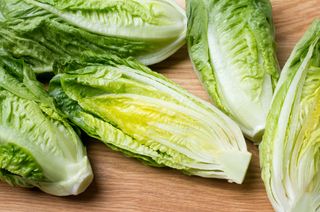
CDC Issues Yet Another Warning Not to Eat Romaine Lettuce
U.S. officials are warning Americans not to eat romaine lettuce from Salinas, California.

If you have your heart set on eating romaine lettuce soon, we've got some bad news for you — U.S. officials are warning Americans not to eat some types of romaine lettuce.
Today (Nov. 22), the Centers for Disease Control and Prevention (CDC) said people should not eat romaine lettuce harvested from Salinas, California.
Romaine lettuce from this growing region has been linked with an outbreak of E. coli that has sickened 40 people in 16 states. Of these, 28 people have been hospitalized and five have developed a serious kidney condition called hemolytic uremic syndrome. No deaths have been linked with the outbreak so far.
Most romaine lettuce products should have a label showing where they are grown. If people have purchased romaine lettuce that says "Salinas" on the label, they should not eat it and should throw it away, the CDC said. If the lettuce doesn't have a label, you should not eat the product.
The U.S. Department of Agriculture recently recalled more than 75,000 pounds of salad products containing romaine lettuce from the company Missa Bay, LLC, as the products may be contaminated with E. coli.
The CDC has issued several warnings not to eat romaine lettuce in the past few years — a similar warning was made around the same time last year in connection with a different outbreak.
- Top 7 Germs in Food that Make You Sick
- 9 Disgusting Things That the FDA Allows in Your Food
- 27 Devastating Infectious Diseases
Originally published on Live Science.
Sign up for the Live Science daily newsletter now
Get the world’s most fascinating discoveries delivered straight to your inbox.


Rachael is a Live Science contributor, and was a former channel editor and senior writer for Live Science between 2010 and 2022. She has a master's degree in journalism from New York University's Science, Health and Environmental Reporting Program. She also holds a B.S. in molecular biology and an M.S. in biology from the University of California, San Diego. Her work has appeared in Scienceline, The Washington Post and Scientific American.
